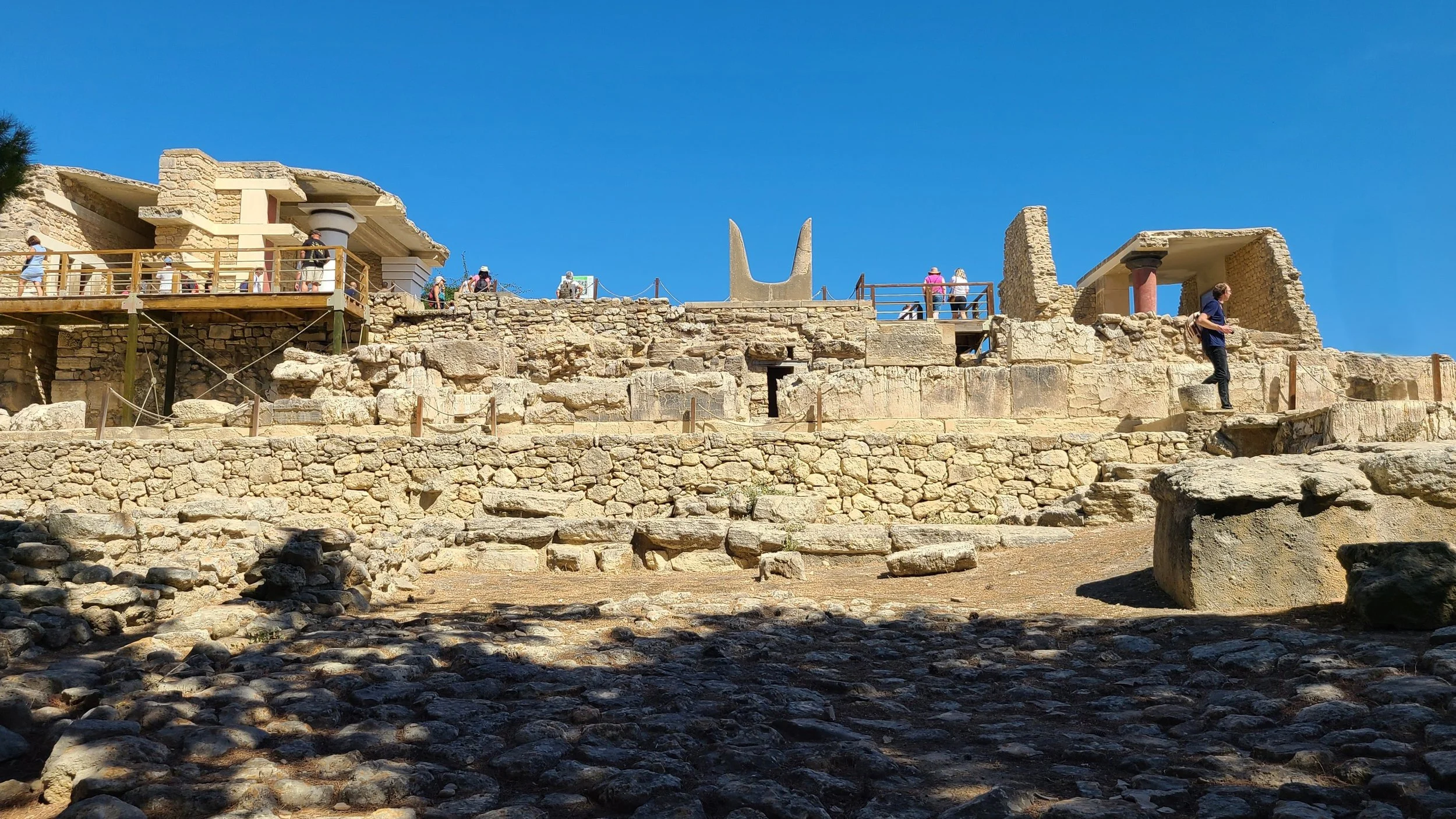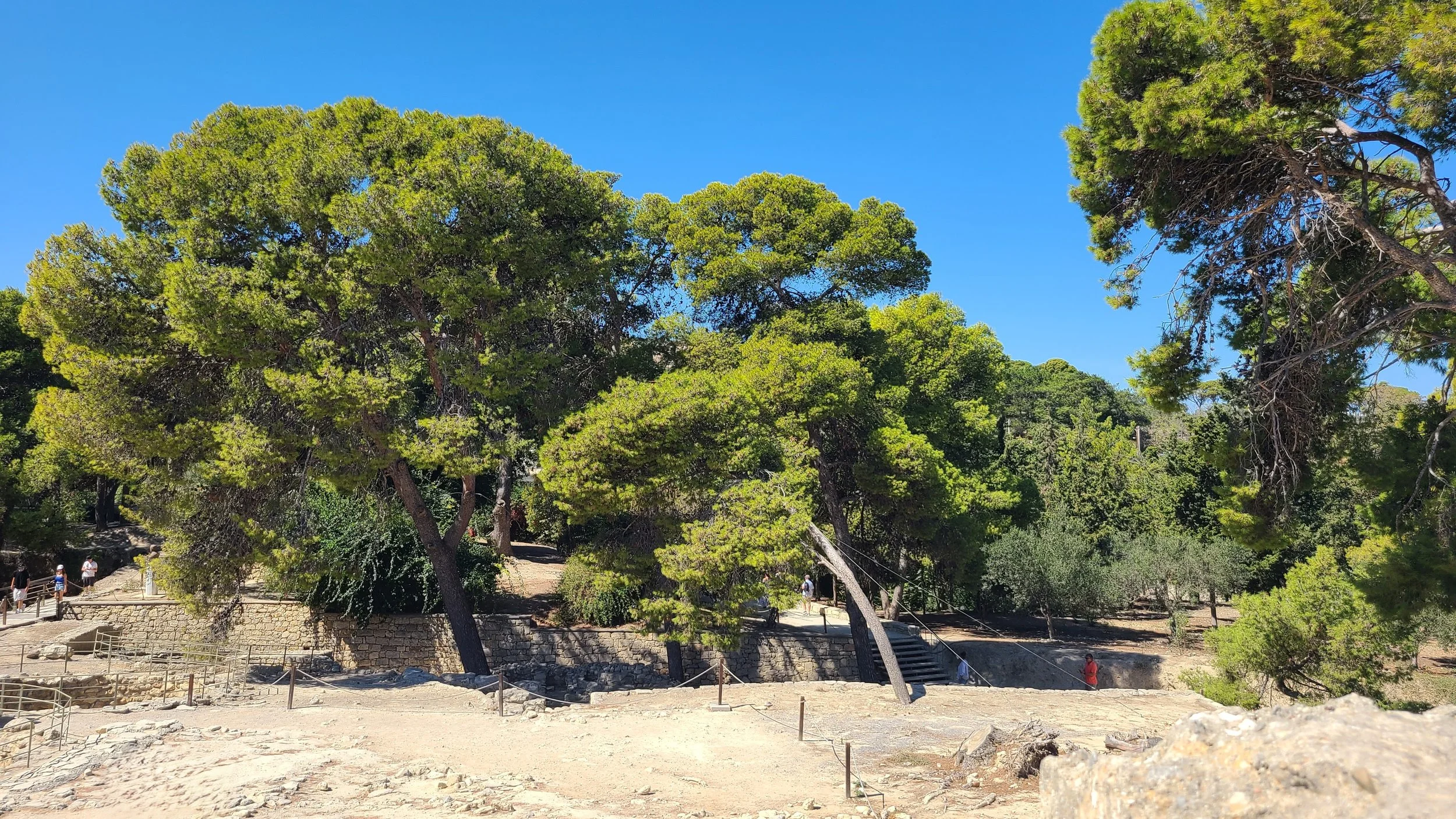Return to Knossos
Caroline and I worked at the Knossos Urban Landscape Project [1] back in 2008. Neither of us has had the opportunity to return to Crete until now.
We were also supposed to meet up with the current Curator at Knossos, Dr Kostis S. Christakis [2] so we planned our day there around his availability, and ended up at the site at 11:30 in the morning on a very hot day and with throngs of people. I would recommend being early on site, because even in late September it was still very toasty. Bring a hat! I forgot mine at the hotel and had to buy another (for 47 Euros). Regardless, the site was still spectacular (although no signs of the new museum).[3]
We were greeted once again by some peacocks - just as we were 17 years ago. They are not native to Crete, having been a modern introduction, but they obviously feel safe strutting about the site.
Stunning peacock
welcomed us at the entrance.
Anyone who travels with an archaeologist must wonder why we want to take photos from 15 different angles of a door frame, or why I am throwing coins down on the ground beside some broken bits of pottery before I snap away. Other archaeologists would get it, but tourists seemed to find me quite amusing.
The different angles may pick up different carvings or script, bits of colour or be used for photogrammetry… The coins are a quick option to show scale of something when you don’t have your photographic scales with you.
I try to go to sites when they are less busy. It is hard to shoot photos without a ton of tourists in them. Thanks to photo-editing you can sometimes remove one, but I try to wait a moment or two to get shots with the least number of people in them. I tell myself they are just for scale!
Back in 2008 I still had a film camera, so my photos were limited. I made sure to take lots on this visit.
In addition to the peacocks, we are also introduced to the statues of the two main archaeologists of the site, Minos Kalokairinos, [4] an amateur archaeologist who commenced the excavations that were later continued by Arthur Evans.[5]
Without going into the whole history of the site, which can surely be found in numerous other sources, I offer up some of my photos.
L: white colonnaded room with a copy of the ‘Prince of Lilies’ fresco; C: the sacred Horns of Consecration; R: the Shrine of the Double Axes
Some of the magnificent trees at Knossos.
I hope this short blog peaks your interest in this area of history, and your desire to travel to Crete. Please leave comments below.
You can see a short video of the overview of some of the site on my YouTube channel here.
[1] You can read about our past work in Crete here: Minoan Adventures and Caroline in Crete.
[2] Just before we were to meet up he informed us something came up so we didn’t get to see him or the Research Centre, and we definitely could have come earlier in the day (before the crowds and the oppressive heat). It was a bit disappointing.
[3] https://www.bsa.ac.uk/join-us-2/knossos-2025-project/
[4] Minos Kalokairinos - https://en.wikipedia.org/wiki/Minos_Kalokairinos
[5] Arthur Evans - https://en.wikipedia.org/wiki/Arthur_Evans















